Yoga is practiced all over the world as it continues to grow in popularity. It’s actually an ancient practice developed more than 5,000 years ago in India. It began as philosophical teachings to live a wholesome life and to become closer to the Divine. Over the centuries, yoga has maintained its original intention, but it certainly has evolved over time.
Today, one can step into a yoga studio to practice a more physical aspect of yoga, called Asana. That is the nature of moving the body through a series of poses and sequences that bring more awareness to the body. It also contributes to a healthier state of being. For example, if one is experiencing a sore back, tight hips, or is recovering from a recent injury, the physical practice of yoga can help in the healing process. Although the popularity of yoga has grown around the physical nature of the practice, yoga is so much more. Asana is only one portion of the full richness of the yoga philosophy. Another important aspect of yoga is Meditation.

Meditation
Meditation is an intentional practice of enhancing one’s focus and awareness. Yoga in this form can help with a common human experience: stress. Anxiety and stress can be detrimental to the mind and body. It may lead to serious health deficits including heart disease, depression, high blood pressure, and more. Taking the time to sit in stillness to meditate is very important and necessary for the well being of the individual.
When one is able to come to this restful state, it can lower heart rate thereby reducing the risk of high blood pressure and other heart conditions. Further, a mindful meditation practice can ease the anxious mind. We are commonly flooded with worries, concerns, and distractions that only add tension to the entire bodily system. The mind needs much needed rest, just as the body needs rest from a strenuous workout, for example.
Pranayama
Another aspect of yoga is called Pranayama, which is a breathing practice. It focuses on various ways to breathe in order to enhance mental healing. With a mindful connection and awareness to the breath, one can put aside the stressful thoughts that can plague the mind. It brings the practitioner to the present rather than focusing on the past or worrying about an unknown future. The breath practice is directly related to meditation, too.
While in meditation, one uses the breath as a tool or anchor to stay present. It allows the yogi to observe those constant and overwhelming thoughts while adding no judgement to them. Eventually, the person is able to release those thoughts and replace them with more healthy intentions and a mindfulness that keeps them more in the present moment.
The practice of yoga is to help the practitioner feel more whole. That experience can be fulfilled with healing the body with physical movement and cleansing the mind with breath work and meditation. As it relates to the ancient origins of yoga, this wholesome practice allows for a clearer life pathway. This may lead to healthy living and even a guide toward Enlightenment and the Divine.
Equipment
What is wonderful about starting a yoga practice is that you do not need much equipment. All you really need is a yoga mat and some comfortable clothing. The yoga mat provides a well-suited platform for moving through yoga positions. You want to wear something that does not restrict the body while you are in motion. This also goes for sitting comfortably for your meditative practice. If you’d like, you can simply sit on your yoga mat. If you need more support, try sitting on a folded blanket or cushion so the focus can remain on the yoga practice rather than trying to sit still.
Now you are ready to practice yoga. Whatever your intention is, to seek relief in your stiff body or to reduce tension and stress, you can find that yoga is a resourceful way to meet your goals.
Related Video:


